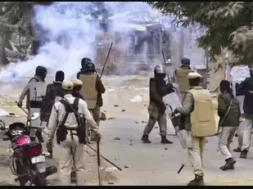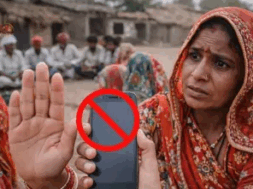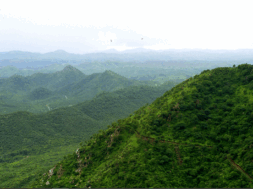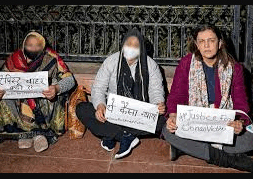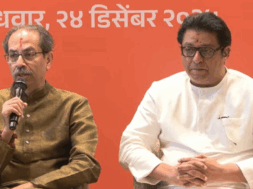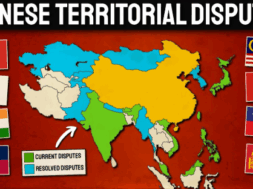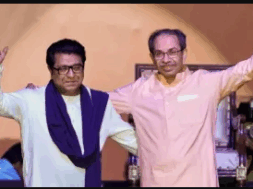
Modi’s Second Day in Bangladesh: Visits Temples, Held Summit Meeting
Manas Dasgupta
DHAKA, Mar 27: The two-day visit to Bangladesh by the prime minister Narendra Modi, his first foreign trip since the outbreak of the Corona pandemic last year, ended on Saturday with a high-level meeting between him and his Bangladesh counterpart Sheikh Hasina along with their respective aides.
The details of the summit meeting were not immediately announced but the two leaders were learnt to have discussed a wide range of subjects of bilateral and mutual interest and promises for future closer ties between the two close neighbours.
The two sides also inked a number of agreements covering a number of areas of bilateral cooperation.
The two leaders are also likely to make new announcements of cooperation in areas of culture, preservation of spirit of 1971, health, railways, education, border development, power cooperation and start-ups.
“Our partnership with Bangladesh is an important pillar of our Neighbourhood First policy, and we are committed to further deepen and diversify it. We will continue to support Bangladesh’s remarkable development journey, under Prime Minister Sheikh Hasina’s dynamic leadership,” Modi had tweeted ahead of his visit on Thursday.
Modi’s visit co-incide with Bangladesh commemorating “Mujib Borsho,” the birth centenary of “father of Bangladesh” Sheikh Mujibur Rahman and 50 years of the country’s war of liberation which were attended by the Indian prime minister on Friday. The two countries are also celebrating 50 years of the establishment of diplomatic ties.
The two Prime Ministers had held a virtual summit on December 17 during which Modi said Bangladesh was a key pillar of New Delhi’s ‘Neighbourhood First’ policy, while Ms. Hasina described India as a “true friend” and asserted that both countries could play a significant role in the global and regional value chains by further integrating their economies as well as boosting connectivity.
Addressing the Matua community in Bangladesh’s Orakandi earlier in the day, Modi said both India and Bangladesh want to see peace, stability and love in the world.” Both India and Bangladesh want to see the world progressing through their own progress. Both the nations want to see stability, love, and peace in the world instead of instability, terror, and unrest,” the Prime Minister said.
Modi began the second day’s stay in Bangladesh with a visit to the Jeshoreshwari and Orakandi Temples in southwestern Shatkhira and Gopalganj to offer prayers. “Today, I got the opportunity to offer prayers before Maa Kali…I prayed to her to free the human race from Covid-19,” the prime minister said.
He later visited the Mausoleum of Sheikh Mujibur Rahman in Tungipara along with Sheikh Hasina and laid a wreath and planted a sapling to pay tribute to “Bangabandhu.”
Modi said India was moving forward with the mantra of ‘Sabka Saath, Sabka Vikas, and Sabka Vishwas’, and Bangladesh was its co-passenger in it. “Bangladesh is presenting a strong example of development and change in front of the world and India is your co-passenger in these efforts,” he added.
Speaking at Modi said, “During Corona pandemic, India & Bangladesh have proven their capabilities. Today both nations are facing this pandemic strongly and fighting it together. India is working by considering it its duty that Made in India vaccine reaches the citizens of Bangladesh.”
He said both India and Bangladesh want to see peace, stability and love in the world. “Both India and Bangladesh want to see the world progressing through their own progress. Both the nations want to see stability, love, and peace in the world instead of instability, terror, and unrest,” the Prime Minister said.
The offered prayers at a Matua temple in Bangladesh’s Orakandi, the birthplace of Hindu mystic figure and Matua community’s spiritual guru Harichand Thakur. Modi, who was wearing a mask, offered prayers at the Harichand-Guruchand Temple, where he was welcomed with ‘Dhaak, Shankh, Ulu’ in line with local rituals.
Orakandi is the abode of hundreds of Hindu Matua community, a large number of whom are residents of West Bengal. Ahead of his visit, Modi had said he was looking forward to his interaction with representatives of the Matua community at Orakandi, from where Sri Sri Harichand Thakur disseminated his pious message.
Analysts said Modi’s planned temple visit carry a political significance at the time of the ongoing assembly elections in West Bengal. Last time when Prime Minister Modi visited Bangladesh in 2015, he offered puja at Dhakeshwari temple in the national capital. Bangladesh has taken extra security measures for the Indian premier’s visit in the wake of protests by few leftist and Islamist groups.
Earlier, he had offered prayers at the centuries-old Jeshoreshwari Kali temple in Ishwaripur village in southwestern Bangladesh and announced that India would build a multipurpose community hall for the worshippers.
“Feeling blessed after praying at the Jeshoreshwari Kali Temple,” Modi tweeted after offering prayers at the temple in southwestern Shatkhira district, bordering India.
“PM @narendramodi places hand made Mukut on Ma Kali. Mukut made of silver with gold plating. Hand made over three weeks by a traditional artisan,” Ministry of External Affairs Spokesperson Arindam Bagchi tweeted.
Speaking outside the temple, Modi said he prayed to Goddess Kali to free the human race from COVID-19.
Noting that a large number of devotees from across the border and Bangladesh visit during ‘Maa Kali mela’ at the temple, Modi said a community hall was needed which should be multi-purpose so that when people come here during Kali puja, it was useful to them too.
“It should be useful for social, religious and educational events for local people. Most importantly, it should act as a shelter for all at the time of disasters like cyclones. India will do construction work. I express my gratitude to the Bangladesh government that they have wished us well for this,” Modi said.
According to Hindu mythology, the Jeshoreshwari Kali temple is one of the 51 Shakti Peeths, scattered across India and neighbouring countries. Records suggest a Hindu king set up the temple in the 16th century.
